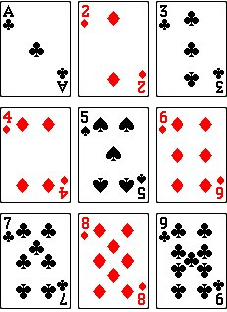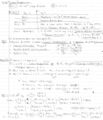12-240/Classnotes for Thursday October 18: Difference between revisions
No edit summary |
No edit summary |
||
| Line 50: | Line 50: | ||
Image:12-240-1018-2.jpg |page2 |
Image:12-240-1018-2.jpg |page2 |
||
</gallery> |
</gallery> |
||
== HW5 link dead from this page, by [[User:Failure|Failure]]== |
|||
Revision as of 01:05, 23 October 2012
| |||||||||||||||||||||||||||||||||||||||||||||||||||||||||
Riddle Along
The game of 15 is played as follows. Two players alternate choosing cards numbered between 1 and 9, with repetitions forbidden, so that the game ends at most after 9 moves (or four and a half rounds). The first player to have within her/his cards a set of precisely 3 cards that add up to 15 wins.
Does this game have a winning strategy? What is it? Who wins, the first to move or the second? Why am I asking this question at this particular time?
See also a video and the transcript of that video.
| Dror's notes above / Students' notes below |
Theorems
1. If G generates, |G| n and G contains a basis, |G|=n then G is a basis
2. If L is linearly independent, |L| n and L can be extended to be a basis. |L|=n => L is a basis.
3.W V a subspace then W is finite dimensioned and dim W dim V
If dim W = dim V, then V = W If dim W < dim V, then any basis of W can be extended to be a basis of V
Proof of W is finite dimensioned:
Let L be a linearly independent subset of W which is of maximal size.
Fact about N
- Every subset A of N, which is:
1. Non empty
2. Bounded : N N, a A, a N
has a maximal element: an element m A, a A, a m ( m + 1 A )
class note














